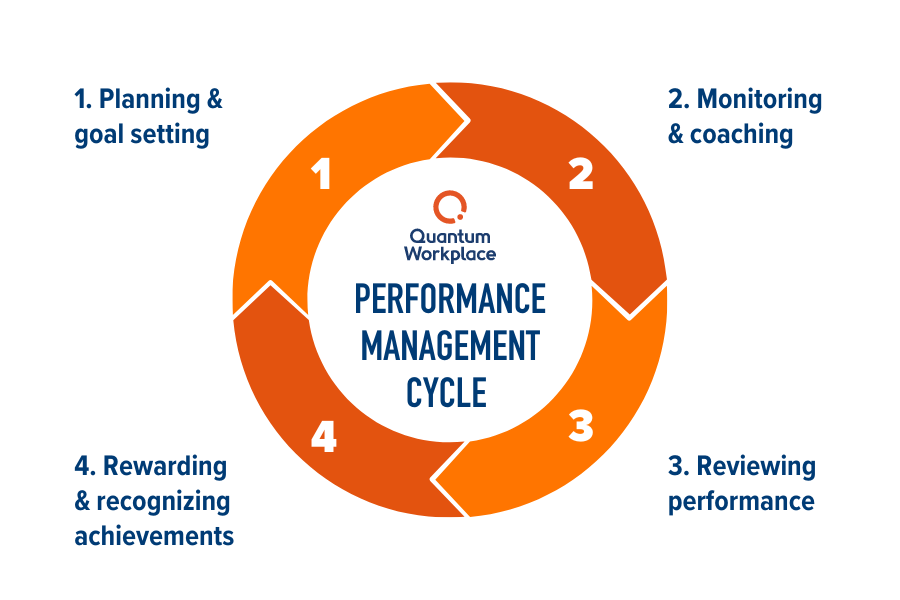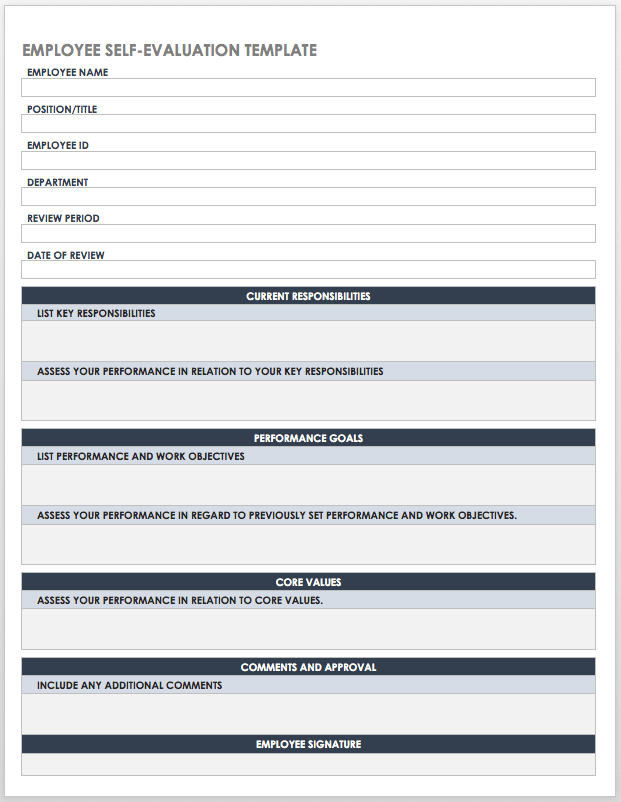How to Write an End of Year Performance Review That Stands Out
Crafting an impactful end of year review is crucial for promoting growth and collaboration. A thoughtfully written review not only showcases accomplishments but also pinpoints areas for improvement, setting the stage for professional development.
Key Takeaways
- • A well-structured end-of-year performance review highlights achievements, addresses challenges, and sets actionable goals for future growth.
- • Incorporate specific examples and measurable results to make your accomplishments stand out and demonstrate your value to the organization.
- • Use constructive feedback to foster a culture of growth, helping employees understand their strengths and areas for improvement.
- • Encourage two-way communication during reviews to create a collaborative environment where both managers and employees feel heard and valued.
- • Align personal goals with organizational objectives to enhance motivation and ensure contributions are meaningful to the company's success.
- • Utilize tools like PageOn.ai to streamline the review process, making it easier to gather data and present findings effectively.
Employee Response to Performance Reviews
Only 14% of employees feel motivated by traditional performance reviews, highlighting the need for more effective strategies.
What Is an End-of-Year Performance Review?
An end-of-year performance review serves as a structured process to evaluate an employee's contributions, challenges, and growth over the past year. It provides a formal opportunity to reflect on achievements, address areas for improvement, and set goals for the future.
Definition and Purpose of an End of Year Review
A year-end review is a formal evaluation conducted at the close of the year to assess how well you have met your goals and responsibilities. It focuses on your accomplishments, the obstacles you faced, and the progress you made.
"Year-end reviews are a common practice for reflecting on the past year and planning for the next." This structured approach ensures that both you and your employer can identify strengths, address weaknesses, and create actionable plans for improvement.
Key Components of a Year End Review
A comprehensive year-end review typically includes several key elements. These components ensure that the evaluation is thorough and meaningful:
flowchart TD
A[Performance Review] --> B[Performance Summary]
A --> C[Strengths & Weaknesses]
A --> D[Feedback & Guidance]
A --> E[Future Goals]
B --> B1[Recap achievements]
B --> B2[Highlight value added]
C --> C1[Identify excellence areas]
C --> C2[Address improvement needs]
D --> D1[Constructive input]
D --> D2[Growth suggestions]
E --> E1[Set clear objectives]
E --> E2[Align with organization]
How an Employee Performance Review Differs from Regular Feedback
An employee performance review differs significantly from the regular feedback you might receive throughout the year. While regular feedback often focuses on immediate tasks or projects, a year-end review takes a broader perspective. It evaluates your performance over the entire year, considering long-term goals and overall contributions.
Regular feedback tends to be informal and specific to day-to-day activities. In contrast, an employee performance review is formal and structured, often influencing decisions about promotions, compensation, and development plans.

Why Are End-of-Year Performance Reviews Important?
End-of-year performance reviews play a vital role in fostering a productive and motivated workforce. These reviews provide a structured opportunity to reflect on achievements, address challenges, and set clear goals for the future.
Benefits for Employees in a Year End Review
A well-executed year end review offers numerous advantages for employees. It serves as a platform to highlight your strengths and accomplishments while receiving constructive feedback for improvement.
-
•
Recognition of Achievements: A year end review allows you to showcase your contributions and receive acknowledgment for your hard work.
-
•
Clear Feedback: Constructive feedback helps you understand how your efforts align with organizational goals and provides actionable insights.
-
•
Career Development: By discussing future objectives, you can align your personal aspirations with the company's vision.
"Highly engaged employees have an 87% lower likelihood of leaving their positions." A meaningful year end review fosters engagement by making you feel valued and supported in your role.
Organizational Advantages of Employee Performance Reviews
For organizations, conducting structured employee performance reviews is essential for maintaining a high-performing workforce. These reviews enhance individual performance and contribute to overall business success.
Organizational Benefits of Performance Reviews
How Performance Review Comments Drive Professional Growth
Performance review comments are a powerful tool for driving employee growth. When written thoughtfully, they provide clear guidance and actionable steps for improvement. These comments help you understand your strengths and areas for development.

How to Write a Standout End-of-Year Performance Review

Preparation Steps for an End of Year Review
Gather Data and Performance Metrics
Start by collecting all relevant data from the past year. Review your performance metrics, project outcomes, and any measurable results tied to your role. This step ensures you have a clear picture of your contributions and achievements.
Review Goals and Objectives from the Year
Revisit the goals and objectives set at the beginning of the year. Compare your progress against these benchmarks to evaluate your performance. Highlight instances where you met or exceeded expectations.
Collect Feedback from Peers and Supervisors
Gather relevant information by seeking input from colleagues and supervisors. Peer feedback offers a different perspective on your work, while supervisor feedback provides guidance on how your efforts align with organizational goals.
Performance Review Preparation Process
flowchart LR
A[Start Preparation] --> B[Gather Performance Data]
B --> C[Review Annual Goals]
C --> D[Collect Peer Feedback]
D --> E[Analyze Strengths & Weaknesses]
E --> F[Prepare Draft Review]
F --> G[Review Complete]
style A fill:#FF8000,stroke:#333,stroke-width:1px,color:white
style G fill:#FF8000,stroke:#333,stroke-width:1px,color:white
Structuring the Employee Performance Review
Start with a Positive Summary
Begin your employee performance review with a positive summary of your year. Acknowledge accomplishments that demonstrate your value to the organization. This sets a constructive tone for the review and shows your commitment to growth.
Highlight Key Accomplishments with Specific Examples
Detail your accomplishments using specific examples. For instance, mention projects where you exceeded expectations or initiatives that had a measurable impact. Focus on concrete results, such as increasing efficiency by 20% or completing a project ahead of schedule.
Address Challenges and Areas for Improvement
Identify challenges you faced during the year and explain how you addressed them. Be honest about areas where improvement is needed. Use this section to show your willingness to grow and adapt.
Writing Performance Review Comments with Impact
Use Clear and Concise Language
Write performance review comments that are easy to understand. Avoid lengthy sentences or overly complex words. Focus on clarity to ensure your message is received as intended.
Avoid Jargon and Overly Technical Terms
Steer clear of jargon or technical terms that may confuse the reader. Use language that is accessible to everyone involved in the review process.
Maintain a Balanced and Constructive Tone
Balance your performance review comments by addressing both strengths and areas for improvement. This balanced approach fosters trust and encourages growth.
"Effective performance reviews focus on clear communication and actionable feedback." By following these principles, you can create a year end review that drives professional development and strengthens your relationship with your organization.
Providing Constructive Feedback in a Performance Review
Providing constructive feedback is a critical part of the performance review process. It ensures employees understand their strengths and areas for improvement while fostering a culture of growth.
Using the SMART Goals Framework for Feedback
The SMART goals framework is an effective way to structure feedback. By aligning feedback with these criteria, you help employees set realistic expectations and track progress effectively.
SMART Goals Framework
"Setting SMART goals is crucial for achieving realistic expectations and tracking progress." This approach motivates employees and provides a clear roadmap for improvement.
Applying the SBI Model (Situation, Behavior, Impact)
The SBI model—Situation, Behavior, Impact—is another powerful tool for delivering constructive feedback. This framework helps you provide feedback that is specific, objective, and actionable.
- Situation: Describe the context where the behavior occurred. For example, "During last week's team meeting..."
- Behavior: Focus on the specific actions taken by the employee. Avoid generalizations. Say, "You interrupted colleagues multiple times," instead of, "You were disruptive."
- Impact: Explain the effect of the behavior on the team or project. For instance, "This made it difficult for others to share their ideas and slowed down decision-making."

Tips for Delivering Feedback Positively and Effectively
Delivering feedback effectively requires a thoughtful approach. The way you communicate can significantly impact how the feedback is received and acted upon.
-
•
Be Specific and Honest: Avoid vague statements. Instead, provide clear examples to support your points.
-
•
Focus on Growth: Frame feedback as an opportunity for improvement. Use phrases like, "This is an area where you can grow."
-
•
Balance Positive and Negative Feedback: Start with positive performance review comments to build confidence.
-
•
Encourage Dialogue: Invite employees to share their perspective. Ask questions to foster a two-way conversation.
-
•
End on a Motivational Note: Conclude the discussion by reinforcing your belief in their potential.
Encouraging Two-Way Communication in Year End Reviews
Two-way communication transforms year-end reviews into meaningful discussions. It ensures that both you and your employees feel heard, valued, and aligned. By fostering open dialogue, you can create a collaborative environment that drives growth and engagement.
Inviting Employee Input and Self-Assessment
Encourage employees to actively participate in their performance reviews by sharing their perspectives. Ask them to reflect on their achievements, challenges, and areas for improvement. Self-assessment allows employees to take ownership of their performance and provides valuable insights into their thought processes.
"During a performance review, managers and employees review all areas of success and areas of improvement." This collaborative effort lays the foundation for creating actionable plans that build on strengths and address weaknesses.
Two-Way Communication Process
sequenceDiagram
participant M as Manager
participant E as Employee
M->>E: Provides initial feedback
E->>M: Shares self-assessment
M->>E: Asks clarifying questions
E->>M: Offers perspective on challenges
M->>E: Acknowledges input
E->>M: Suggests improvement ideas
M->>E: Collaborates on goal setting
Note over M,E: Mutual agreement on action plan
Creating a Collaborative Review Process
A collaborative review process fosters mutual respect and understanding. Instead of making the review a one-sided evaluation, turn it into a conversation. Share your observations and invite employees to share theirs. This exchange of ideas helps identify gaps, align expectations, and strengthen the manager-employee relationship.
To create a collaborative atmosphere, focus on active listening. Pay attention to what employees say without interrupting or making assumptions. Use open-ended questions like, "What challenges did you face this year?" or "How can I support you better in achieving your goals?"
Addressing Employee Concerns and Suggestions
Addressing employee concerns is crucial for building trust and engagement. During the review, create a safe space where employees feel comfortable voicing their opinions. Listen to their concerns without judgment and acknowledge their feelings.
When employees offer suggestions, take them seriously. Evaluate their ideas and discuss how they can be implemented. Acting on employee feedback demonstrates your commitment to their growth and fosters a culture of continuous improvement.
"Managers can also take this discussion as an opportunity to ask for feedback on how they can support the employee better." This reciprocal feedback strengthens the relationship and ensures that both parties work toward shared success.

Setting Actionable Goals for the Future

Setting actionable goals ensures you maintain focus and direction in your professional journey. Clear objectives not only guide your efforts but also align your contributions with organizational success.
Aligning Goals with Organizational Objectives
Aligning your goals with organizational objectives strengthens your role within the company. When your personal targets match the company's priorities, you contribute more effectively to its success. This alignment fosters a sense of purpose and enhances your overall performance.
"Employees are 3.2X more likely to be engaged when their performance goals align with the organization's goals."
Impact of Goal Alignment on Engagement
Creating a Roadmap for Professional Development
A well-structured roadmap provides clarity and direction for your professional growth. It breaks down your long-term aspirations into manageable steps, making progress more achievable. Without a clear plan, you risk losing focus or feeling overwhelmed.
- Define Your Career Objectives: Identify where you want to be in the next year or beyond. Be specific about the skills or roles you aim to achieve.
- Break Down Goals into Steps: Divide larger objectives into smaller, actionable tasks. For instance, if you want to improve leadership skills, consider enrolling in a workshop or seeking mentorship opportunities.
- Prioritize Development Areas: Focus on areas that align with both your interests and organizational needs. This ensures your growth benefits both you and your company.
Establishing Clear Timelines and Milestones
Timelines and milestones transform vague aspirations into concrete plans. They provide a structure for tracking progress and maintaining accountability. Without deadlines, goals can lose urgency and become harder to achieve.
-
•
Set Specific Deadlines: Assign realistic timeframes to each step in your roadmap. For example, aim to complete a certification course within six months.
-
•
Define Milestones: Break your timeline into smaller checkpoints. Celebrate achievements along the way to stay motivated.
-
•
Monitor Progress Regularly: Review your milestones periodically to ensure you remain on track. Adjust timelines if necessary to accommodate unforeseen challenges.
"The annual review process facilitates goal setting and evaluation, ensuring employees are aligned with the organization's objectives."
How PageOn.ai Can Help You Create a Standout Review
AI-Powered Search and Virtual Presentation Tools
PageOn.ai offers advanced AI-powered search capabilities that streamline the process of gathering relevant information for your performance reviews. You can quickly locate key data, metrics, and examples to support your evaluations. The platform also includes virtual presentation tools, enabling you to create visually engaging and professional reports.
Data Analysis and Report Generation
With PageOn.ai, you can analyze performance data effortlessly. The platform processes complex datasets and generates clear, actionable insights. Additionally, the automated report generation tool saves time by creating comprehensive summaries of employee performance.
Customizable Templates and Themes
PageOn.ai provides a variety of customizable templates and themes tailored to performance reviews. These templates simplify the review-writing process by offering pre-structured formats that align with professional standards. You can personalize the content, visuals, and layout to match your organization's branding or specific needs.
PageOn.ai Review Creation Process
flowchart LR
A[Visit PageOn.ai] --> B[Input Review Topic]
B --> C[Upload Reference Files]
C --> D[Review AI-Generated Outline]
D --> E[Select Template]
E --> F[Customize Content & Visuals]
F --> G[Save or Share Review]
style A fill:#FF8000,stroke:#333,stroke-width:1px,color:white
style G fill:#FF8000,stroke:#333,stroke-width:1px,color:white
Step-by-Step Guide to Using PageOn.ai
Visit the PageOn.ai Website
Start by visiting the official PageOn.ai website. The user-friendly interface makes navigation simple, even for first-time users. You can access all the tools and features directly from the homepage.
Input Your Topic and Upload Reference Files
Enter the topic of your performance review into the platform. If you have supporting documents, such as employee feedback or performance metrics, upload them to enhance the AI's understanding. This step ensures that the generated content is tailored to your specific requirements.
Review AI-Generated Outlines and Select a Template
PageOn.ai creates detailed outlines based on the information you provide. Review these outlines to ensure they align with your goals. Once satisfied, choose a template that suits your style and organizational needs.
Customize Content, Charts, and Visuals
Personalize the content by editing text, adding charts, or incorporating visuals. Use the drag-and-drop feature to adjust elements easily. This customization allows you to highlight key achievements, challenges, and goals in a visually appealing manner.
Save and Share Your Presentation or Download as PDF
After finalizing your review, save it on the platform or download it as a PDF. You can also share the document directly with colleagues or supervisors. This seamless sharing feature ensures that your performance reviews are accessible and professional.

Why PageOn.ai Is a Game-Changer for Performance Reviews
PageOn.ai revolutionizes the performance review process by combining efficiency, accuracy, and creativity. Its AI-driven tools eliminate the stress of manual data analysis and report writing. By automating repetitive tasks, the platform allows you to focus on delivering meaningful feedback.
"AI tools like PageOn.ai normalize feedback and build a culture that prioritizes employee growth and development."
Unlike traditional methods, PageOn.ai ensures that your reviews are data-driven and visually engaging. The customizable templates and themes make it easy to create standout reviews that resonate with your audience. Whether you're a manager or an employee, this platform empowers you to craft reviews that inspire growth and collaboration.
Tips for Writing End-of-Year Reviews: Advice for Employees and Managers
For Employees
How to Prepare for Your Self-Assessment
Preparing for your self-assessment requires thoughtful reflection and organization. Start by reviewing your accomplishments from the past year. Gather data, such as project outcomes, performance metrics, and feedback from colleagues or supervisors.
"Give employees the opportunity to reflect on their performance and provide self-assessments. This empowers them to take ownership of their development."
Highlighting Your Achievements Effectively
When highlighting your achievements, focus on measurable results and specific examples. Avoid vague statements. Instead, detail how your actions positively impacted your team or organization. For example, instead of saying, "I worked on a project," say, "I led a project that increased efficiency by 15%."
Addressing Challenges with a Growth Mindset
Acknowledging challenges in your year end review shows self-awareness and a proactive attitude. Identify areas where you struggled and explain how you addressed these difficulties. Frame challenges as opportunities for growth. Highlight what you learned and how you plan to apply these lessons moving forward.

For Managers
Balancing Objectivity and Empathy
As a manager, balancing objectivity and empathy is essential during a year end review. Start by evaluating performance based on measurable outcomes and specific examples. Avoid letting personal biases influence your assessment. Focus on facts and data to ensure fairness.
"Done right, performance reviews can engage and motivate employees to maximize and align their efforts."
Recognizing and Rewarding Employee Contributions
Recognizing employee contributions boosts morale and reinforces positive behavior. During the review, highlight specific achievements and explain how they benefited the team or organization. Consider offering tangible rewards, such as bonuses, promotions, or professional development opportunities.
Setting the Tone for Future Success
Use the year end review to set a positive tone for the future. Collaborate with employees to establish clear, actionable goals that align with their aspirations and organizational priorities. Provide guidance on how they can achieve these objectives and offer support, such as training or mentorship.
"By focusing performance reviews on acknowledgment and growth, you can help your organization build a happier, more committed workforce."
FAQ
What should be part of an effective performance review?
An effective performance review includes clear, measurable goals and actionable feedback. You should focus on specific achievements, areas for improvement, and future objectives. This approach ensures that the review promotes growth and aligns with both individual and organizational priorities.
Tip: Always center the conversation on how the employee's contributions align with the company's goals. This fosters a sense of purpose and direction.
What makes a performance review effective?
A performance review becomes effective when it ensures alignment between you and your employer regarding expectations. It provides an opportunity to discuss your concerns, achievements, and challenges within your role.
"Performance reviews ensure that employees are working effectively and have a chance to express their concerns within their given role."
How can I prepare for my performance review?
Preparation starts with gathering data about your accomplishments, challenges, and feedback from the past year. Review your goals and compare them to your progress. Identify specific examples that highlight your contributions.
Pro Tip: Organize your thoughts in advance to ensure a confident and structured discussion during the review.
How do I address challenges in my performance review?
When addressing challenges, focus on what you learned and how you adapted. Be honest about the difficulties you faced, but emphasize the steps you took to overcome them.
Key Insight: Framing challenges as opportunities for growth demonstrates self-awareness and a proactive mindset.
Why is constructive feedback important in a performance review?
Constructive feedback helps you understand your strengths and areas for improvement. It provides actionable insights that guide your professional development. Feedback also fosters trust and encourages open communication between you and your manager.
"Every conversation should be centered around clear, measurable goals and actionable feedback that helps employees grow."
How can I highlight my achievements effectively?
To highlight your achievements, use specific examples and measurable results. Avoid vague statements. Instead, detail how your actions positively impacted your team or organization.
Example: "I led a project that increased efficiency by 20%, saving the team valuable time and resources."
What role does two-way communication play in a performance review?
Two-way communication transforms a performance review into a meaningful dialogue. It allows you to share your perspective, voice concerns, and contribute to goal-setting. This collaborative approach builds trust and ensures alignment between you and your employer.
Remember: Active listening and open-ended questions create a more engaging and productive review process.
How can I set actionable goals during my performance review?
Actionable goals should be specific, measurable, and aligned with your role and organizational objectives. Break down larger goals into smaller, manageable steps. Set clear timelines and milestones to track progress effectively.
"Employees are 3.2X more likely to be engaged when their performance goals align with the organization's goals."
You Might Also Like
Transforming Value Propositions into Visual Clarity: A Modern Approach | PageOn.ai
Discover how to create crystal clear audience value propositions through visual expression. Learn techniques, frameworks, and tools to transform complex ideas into compelling visual narratives.
Transform Any Content into Professional Slides: The Ultimate Conversion Guide
Learn expert techniques for converting documents, presentations, and visual content into professional slides with this comprehensive guide to content format transformation.
From What to Why in Business Presentations: Purpose-Driven Storytelling Strategy
Transform your business presentations from data-heavy information delivery to purpose-driven storytelling that engages audiences and drives decisions with these expert strategies.
From Status Quo to Solution: Crafting the Perfect Pitch Narrative Arc | PageOn.ai
Learn how to transform your business presentations with powerful status quo to solution narratives. Discover visual storytelling techniques that captivate investors and stakeholders.